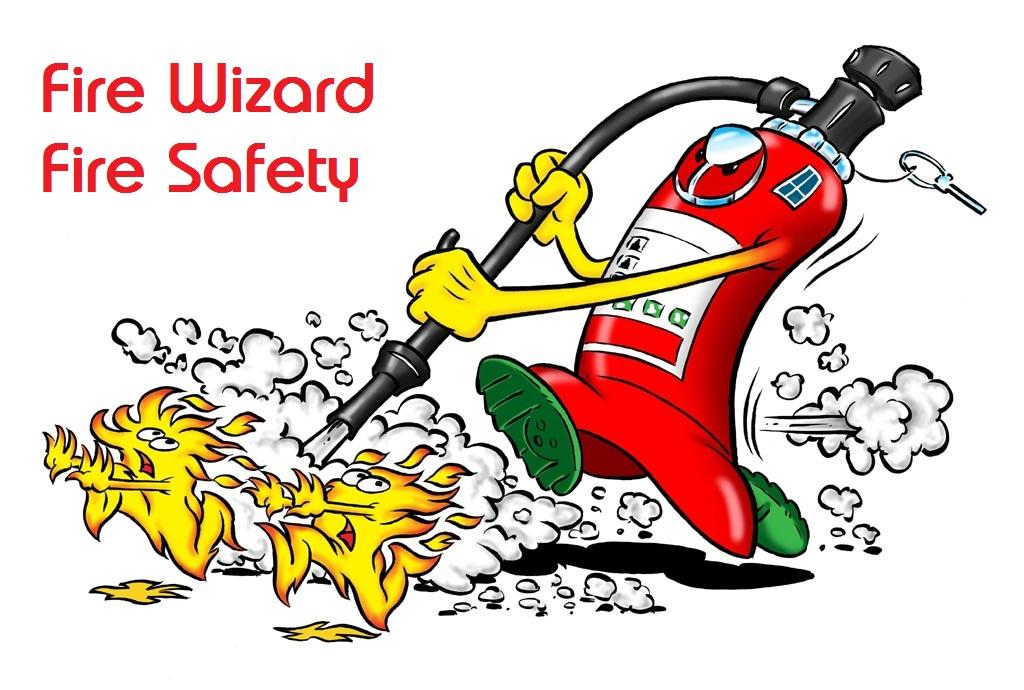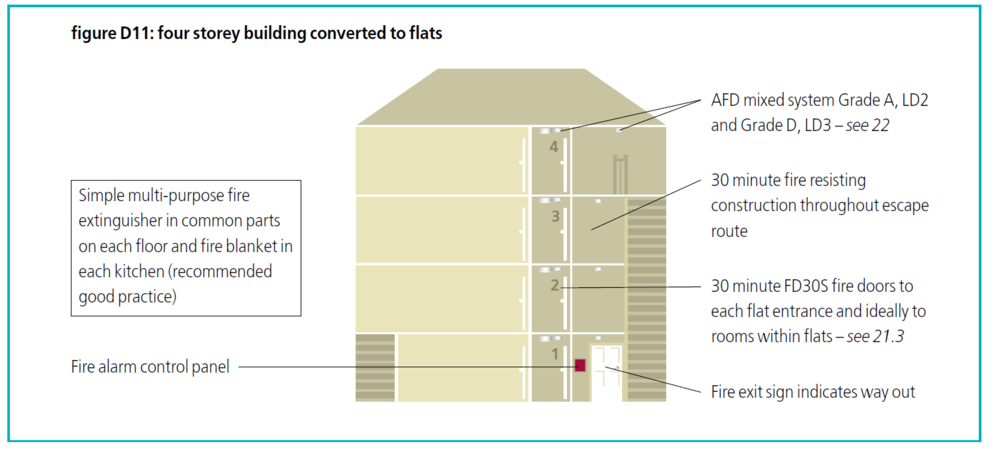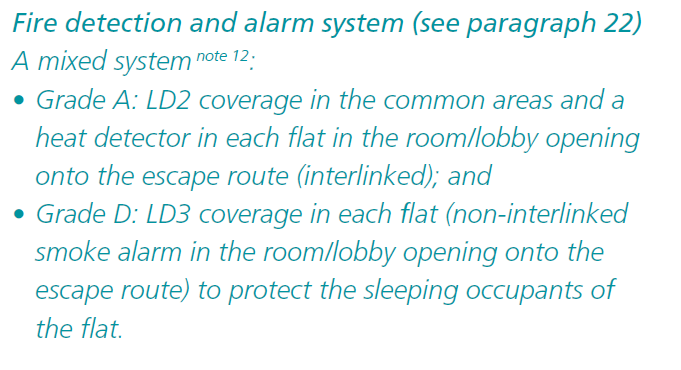-
Posts
2,652 -
Joined
-
Last visited
Everything posted by AnthonyB
-
Try these for advice - they are specialists in the field of making items like yours safe for general use https://www.flameprotectuk.com/
-
Building Regulations only apply to new builds, the DCLG guides replicate the approach used to good effect for over half a century and so as not to penalise existing buildings. The current approach offers enhanced safety, but the old approach still provides a reasonable level of safety in most situations.
-
Heats are a no no for escape routes as by the time they activate the area wouldn't support life. If you need a common system, the common parts have to have smokes. As a very small block by the sounds of it you may be able to retain the existing kit, without looking I can't be sure.
-
The premises should have call points first before detection - domestic smoke alarms are normally not suitable for commercial premises (unless of course you are talking about a HMO where in smaller ones they are OK) Not all Grade D smoke alarm systems can have call points added so knowing what exactly you've got would help. A proper fire detection & warning system to BS5839-1:2017 may be required if it's a commercial building.
-
Rough rule of thumb is one 13A rated extinguisher per 200 sq.m. (each extinguisher has a fire rating written on the front). British Standards (Guidance not law) cite a minimum of 2 A-rated extinguishers regardless of floor size, but that's overkill for the trades benefit and any competent risk assessor would be happy with just one if it's a particularly small office. As most environments have electrical equipment it's common practice to pair each fire point of water or foam with a CO2 Water Mist replaces the 2 separate extinguishers but not all extinguisher suppliers will stock these as they prefer the income from selling and maintaining (& replacing again every few years) twice as many extinguishers so you are best suited to order via Safelincs (don't forget to add Commissioning).
-
You will need a fire risk assessment and this will answer the questions - I'd need to see the site to give definitive advice.
-
It sounds like the vulnerability is where the pipes enter the roof void and this is the junction needing the most attention.
-
Yes, the door will have had it's integrity compromised unless installed with suitable passive fire protection products (e.g. https://envirograf.com/product/animal-door-flap/) and even then the door may loose it's cold smoke protection
-
Usually the communal system would have heat detectors and sounders in each flat to enable full evacuation, which is the purpose of the common system (if it had been purpose built flats it wouldn't need a common system unless it had smoke vents)
-
Has to be on the risk side (below). A full detection & alarm system to evacuate the HMO upon fire in the takeaway is a possible alternative
-
Kapok is quite nasty from a safety point of view: It is irritant: as the fibres are designed to disperse seeds on the wind, it is advisable to wear a dust mask when stuffing items with kapok, as the fibres fly in all directions and can irritate the lungs. It is flammable: the trapped air makes kapok highly flammable, and if it catches fire it is difficult to put the fire out. Special precautions are needed to transport kapok e.g. in the hull of ships. One advantage cited of this characteristic is that kapok can be used as tinder!
-
There seem to be a multitude of potential issues here and I suspect the premises do not have a suitable Fire Risk Assessment, which due to some of the uses is likely to need to be written. Guidance for this type of premises is here: https://assets.publishing.service.gov.uk/government/uploads/system/uploads/attachment_data/file/422195/9294_Small_Mediumt_v2.pdf It sounds like the stair may need to be a protected route meaning you can't have the storage unless you build an under stair cupboard of 30 minutes fire resistance. It also sounds like it needs an electrical fire detection & warning system to BS5839-1 (not just domestic detection)
-
This is what the general fire safety guidance says: "Electromechanical devices Electromechnical devices comprise electromechanical lock keeps and draw bolts, which can be controlled by people inside the premises by entering a code or by using ‘smart cards’, which have been adapted to control the exit from certain areas. These devices have been fitted in many premises and may be linked to the fire-detection and/or warning system. Experience has shown that these devices can fail to open in a number of ways. They are dependent on a spring mechanism to return the lock keep or draw bolt(s) and are liable to jam when pressure is applied to the door. It is also relatively easy to fit them incorrectly. Electromechanical locking devices are normally unacceptable on escape doors, unless they are fitted with a manual means of overriding the locking mechanism such as a push bar, push pad or lever handle or that they do not rely on a spring mechanism, fail-safe open and are not affected by pressure, in which case the criteria for electromagnetic devices should be applied." Not much help on maintaining fire integrity of the doorset! Have you asked the BWF or the Guild of Architectural Ironmongers - both provide useful guidance.
-
Recommendation technically. It would achieve the aim of getting everyone out but would make it difficult to correctly identify the area in alarm. It must be old to have a one zone panel, you could save on re-cabling by changing the devices and panel to addressable and program the zones, but there is no other short cut on conventional systems as if you changed the conventional panel to one with multiple zones whilst you could keep the devices you would have to change all the cabling to split into zones.
-
I very much doubt it, most extinguishers are sold overpriced as it's a niche market and they don't sell or are reduced. Water & chemical foam extinguishers will rot through eventually if full and vapourising liquids ones are hazardous (and illegal). Powders and CO2 are no harm left charged, but weight is an issue when you are filling a wall or shelf full of them! Halon 1211 extinguishers are worth more full because of it's rarity and are sort after for continued legal air use as well as illegal other uses (because they are damn good extinguishers!)
-
Dangerous game though with chemicals & wets generally as they will eventually pin hole (or worse if they pressurise) due to corrosion and then are worthless.
-
There is no extra value in being full, just risk. I empty all mine. External condition is the key to value. The tops come off anticlockwise, couple of taps on the lugs to loosen then slowly unscrew. You will see the cage and bottle at the top of the cylinder, gently lift it all out and you can pour out the contents.
-
For the vast majority of purpose built flats the official advice remains stay put unless affected by fire or smoke. There should be a fire risk assessment for the block which will advise on the required evacuation policy for your building, check with the communal areas management company.
-
It's the sort of premises where if you don't box it off it will get stuff stocked against it, a managed solution. Looks too tight to replace the shelves with metal cabinets with lockable metal doors as another alternative.
-
You are being spun the usual sales rubbish about signs having to be rigid plastic, photoluminescent, etc. Self adhesive is fine.
-

does emergency lighting require annual certification
AnthonyB replied to a topic in Emergency Lighting
The British Standard allows for the user to carry out all the routine tests and the installer should have instructed the user on handover accordingly. "Routine inspections and tests Emergency lighting systems should be inspected and tested at regular intervals in accordance with BS EN 50172. NOTE 1 The testing may be performed manually, but if the responsible person is unable to ensure that this will be done, it is advisable to use an automatic test system to perform the tests at the required intervals. NOTE 2 Provision of a periodic inspection and test certificate is specified in BS EN 50172:2004, 6.2. An example of a suitable inspection and test certificate, which can be used for all new installations, major alterations and existing premises, is given in Annex M. Functional operation should be checked at least every month (see 13.1). Testing for full rated duration should be performed on each luminaire at least annually. One of the following precautions should be taken during the full rated duration tests: a) perform the test while the building is empty or at times of minimal risk; or b) only test alternate luminaires at any one time, so that the building has a charged luminaire next to the unit under test. A visual inspection should be performed on each luminaire at least annually. NOTE 3 These precautions are needed because as the full rated duration tests require discharging the batteries, the emergency lighting system is not fully functional until the batteries have had time to recharge. NOTE 4 The minimum duration periods of the system are given in 6.7.3. In the event of failure of any parts of the system, a competent person should be used to repair the fault. Alternative safety procedures should be introduced until the repair is complete and the system has been retested satisfactorily. The responsible person for the building should decide on the appropriate action to be taken for their premises to maintain occupants’ safety during this time. NOTE 5 Examples of possible actions include: • warning occupants to be extra vigilant until the system is rectified; • initiating extra safety patrols; • issuing torches as a temporary measure; • in a high risk situation, limiting use of all or part of the building. The results of tests and any repair action should be recorded in the log book. If safety patrols are likely to be needed to assist evacuation in the event of equipment failure, suitable rechargeable portable hand lamps should be provided, such as those conforming to BS EN 60598-2-22:2014, Annex E. NOTE 6 It is expected that advice on conducting routine tests will have been given to the user as part of the handover procedure given in 10.7. NOTE 7 Routine inspections and tests are specified in BS EN 50172:2004, 7.2. An automatic test system for battery powered systems is specified in BS EN 62034." The user can complete the BS annual duration test certificate, a competent person is only required for repairs according to the BS -
In lovely condition for museum & collector purposes, too good to ruin & turn into a lamp. I wouldn't discharge them as the cylinder (well cone!) may be too corroded to stand the pressure, but would usually remove the acid bottle (carefully!) pour the soda solution into a bucket and (wearing the right PPE) crack the bottle into the soda to neutralise the acid. Wouldn't mind one myself!
-
Yes, but it will limit your occupancy to 60 in the building.



